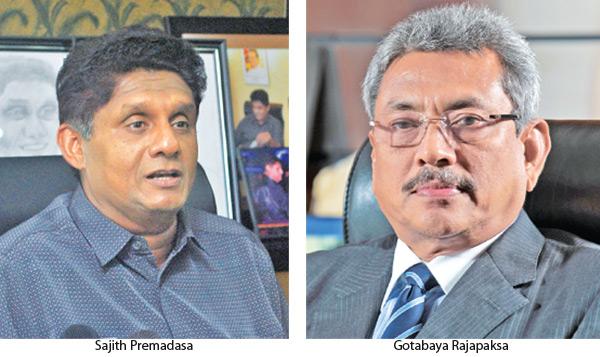
Sri Lanka’s November 16 presidential election is being keenly watched by the international community for more than one reason. One of the factors attracting curiosity from within and outside the country is which way ethnic minorities will vote this time.
This is the third presidential election in the country since the end of the civil war in 2009.
On the previous two occasions (2010 and 2015), the minorities — Sri Lankan Tamils, Hill-country Tamils and Muslims — voted en bloc in favour of the principal rivals of Mahinda Rajapaksa. The six electoral districts known for predominant or dominant presence of the minorities went against him. This uniform mandate was remarkable, despite the three groups being heterogeneous and having, at times, an uneasy relationship among themselves.
In 2010, the former President, who sought a second term and won the election by a huge margin of around 18.43 lakh votes, secured around five lakhs of votes from these districts. His immediate rival and former Commander of the Sri Lanka Army, Sarath Fonseka, polled nearly 7.5 lakhs votes. As per the final result, the former got 60.16 lakhs of votes nationwide and the latter, 41.73 lakh.
Sirisena’s margin
However, five years later, Rajapaksa suffered a stunning defeat at the hands of Maithripala Sirisena. The six districts made a huge difference to the eventual outcome, as Sirisena walked away with about 12.5 lakhs of s votes of around 17.57 lakh valid votes. This made a critical contribution to Mr. Sirisena’s eventual margin of victory of around 4.49 lakhs of votes.
The six districts in question, accounting for about 16 per cent of the country’s electorate, include two in the Northern Province — Jaffna and Vanni; three in the East – Batticaloa, Ampara (also known as Digamadulla) and Trincomalee; and one in the Central Province, Nuwara Eliya.
The voting pattern that the six districts witnessed in 2010 and 2015 was, in a sense, a repeat of the 2005 situation, when Ranil Wickremesinghe got about 6.95 lakhs of votes and Rajapaksa received 3.26 lakhs of votes. In the final nationwide count, the latter outsmarted the former by a narrow margin of 1.75 lakhs of votes. But, an important aspect of the 2005 election was the declaration by the Liberation Tigers of Tamil Eelam (LTTE) of “absence of interest” in the presidential election, the impact of which was felt more in Jaffna than in other districts. In Jaffna, the turnout was a mere 1.2 per cent whereas it ranged from 34.3 per cent in the Vanni to 72.7 per cent in Ampara. The “boycott” call, according to many observers, had determined the end result of the 2005 presidential election. Otherwise, voters in the Tamil-speaking areas, especially Jaffna, would have become the “kingmakers” by voting en bloc for Wickremesinghe.
Statistically speaking, Wickremesinghe’s victory was a possibility in 2005. But the participation of Jaffna voters had always been subdued between 1988 and 2005. The primary reason for this could have been the LTTE factor. It was open knowledge that the Tamil rebels had no “great faith” in the Sinhalese political class or its system. Another reason is that a considerable section of the registered voters were living in other countries as Sri Lanka allows dual citizenship. Even in 2015, when the popular mood among the minorities was to vote out Rajapaksa, the turnout in Jaffna was 66.28 per cent , whereas the figure ranged from about 71 per cent in Batticaloa to around 81 per cent in Nuwara Eliya.
The presence of candidates is a crucial factor that decides voters’ participation. In the present election, there are 35 candidates, the prominent among them being Sri Lanka Podujana Peramuna (SLPP)’s Gotabaya Rajapaksa, United National Party (UNP)’s Sajith Premadasa, Janatha Vimukthi Peramuna (JVP)’s Anura Kumar Dissanayake and former Army Chief, Mahesh Senanayake. However, the race is between Gotabaya and a Premadasa.
More support for Premadasa
Both the main candidates have been able to secure support from political parties representing the minorities, even though Premadasa appears to be enjoying the support of the stronger parties.
At the same time, at the all-island level, Premadasa’s position is not similar to that of Sirisena in 2015, who had been backed by the JVP too.
While Gotabaya, who served as Defence Secretary during his brother’s presidency, has named his manifesto as a “ten-fold policy framework for inclusive governance,” he has to apportion the blame that falls on Mr. Rajapaksa, whose track record on devolution and human rights was, according to his critics, “dismal.”
On the other hand, though Premadasa is backed by the Tamil National Alliance (TNA) and has talked about, in his manifesto, completing the process of constitutional reforms, there is a question mark over his specific position on devolution.
The anti-Muslim riots in Kandy in March 2018 and this year’s Easter blasts are expected to have a bearing on minorities’ psyche.
Further, there are factors like the internal bickering within the ruling coalition and “lackadaisical performance” of the Sirisena-Wickremesinghe government on the economic front that may influence them.
Given the Rajapaksas’ “reach out” programs in the North and the possibility of the UNP candidate facing anti-incumbency, the SLPP nominee could net more votes than his brother in 2015.
Regardless of this, Premadasa’s victory prospects rest on his ability to exceed or even match the support enjoyed by .
Sirisena among the minorities in the six districts. Even a semblance of apathy among voters may only benefit the SLPP, a factor Premadasa should be aware of.
Courtesy: Hindu
